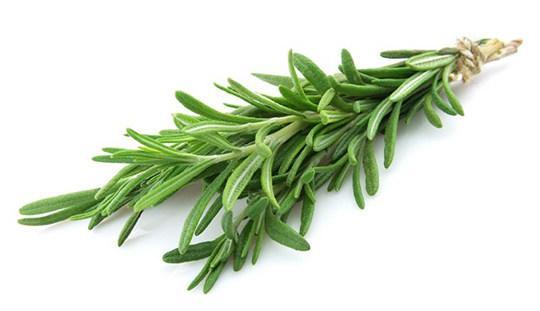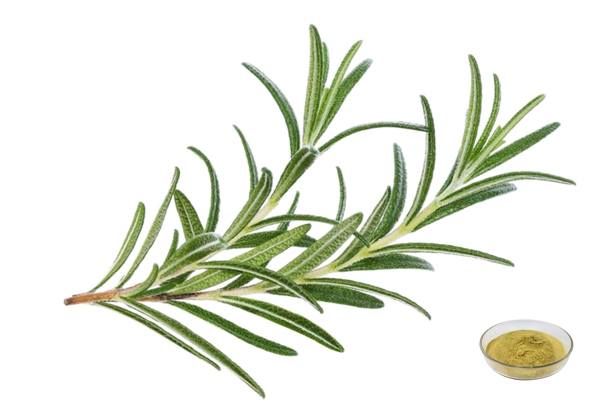Extrait de romarin acide rosmarinique 50% par HPLC
Source: feuille de romarin
Ingrédients actifs: acide rosmarinique
Dosage :50%
Méthode d’essai :HPLC
Apparence: poudre jaune clair
Résidu de Pesticide: conforme à la norme (ce) No 396/2005
- Description Description
- Fiche technique
- Certificat de formation
-
Qu’est-ce que l’acide rosmarinique extrait de romarin?
L’acide rosmarinique est un composé phénolique naturel condensé de l’acide caféique et de l’acide 3,4-dihydroxyphénylique lactique. L’acide rosmarinique est largement répandu et est particulièrement commun dans les familles des consoude, des Labiatae et des cucurbitacées. Les chimistes italiens ont d’abord extrait et isolé du romarin Rosmarinus officinalis Linn et l’ont nommé acide romarin. En tant qu’antioxydant polyphénolique important, l’acide romarin a de nombreuses applications dans les aliments et les cosmétiques et est excellent anti-inflammatoire, antibactérien, anticancéreux, et d’autres activités pharmacologiques.
Extrait de romarin Rosmarinic Acid is a water-soluble natural phenolic acid obtained from rosemary, family Labiatae. It is a natural, efficient, stable, heat-resistant, safe, non-toxic, with no side effects, water-soluble antioxidant, and green food additive.
Extrait de romarin acide rosmarinique 50% 50% par HPLC/HPLC fourni par vert La technologie Spring sélectionne des feuilles fraîches de romarin; À l’aide d’un mortier et d’un pilon, d’un clou de broyage ou d’autres outils appropriés, il est brisé en fines particules pour augmenter l’efficacité d’extraction; Les feuilles de romarin broyées sont immergées dans un solvant organique et, par extraction au solvant, l’acide romarin est extrait des tissus végétaux. Dissoudre. Ensuite, le solvant est récupéré de l’extrait par la technologie de distillation, laissant une solution contenant de l’acide romarin, et enfin, l’acide romarin est purifié de l’extrait par la technologie de cristallisation, en éliminant d’autres impuretés et en obtenant de l’acide romarin de haute pureté.
Green Spring Technology has an excellent R&D team, an independent testing laboratory an experienced production team, a rigorous internal quality control process, and organizes production under ISO, HACCP, and other quality standards. All of the products we offer implement the highest international industry standards, complying with EU EC396, EU 2023/915 standards, and the highest solvent residue standards. We have passed Halal, Kosher, COSMOS, BRC, IFS, FDA, ISO, and many other certifications.
Spécification:
Nom du produit
Rosemary Extract
Nom Latin
Rosmarinus officinalis L.
CAS non.
20283-92-5
Source:
Feuille de romarin
Ingrédients actifs
Acide rosmarinique
spécification
50%
Méthode d’essai
HPLC
apparence
Poudre jaune clair
Résidus de pesticides
Conforme à la norme (ce) n ° 396/2005
Règlement:
Il est conforme à la réglementation de l’ue.
Vous cherchez un devis?Benefits:
Anti-inflammatory
Numerous studies have demonstrated that rosemary extract rosemarinic acid has favorable anti-inflammatory effects. Complement activation usually occurs at sites of inflammation, and rosemarinic acid can covalently bind to the active complement substance C3b and thus inhibit complement activity without side effects. Cyclooxygenase-2 (COX-2) is a dangerous inflammatory factor, Scheckel et al. found that rosemarinic acid could inhibit the expression of the COX-2 gene in colon cancer cells and benign breast epithelial cells, and Lembo et al. demonstrated that rosemarinic acid could prevent medium-wave ultraviolet radiation-induced damage and reduce tumorigenicity in human keratinocyte cell lines. Inflammatory mediators such as tumor necrosis factor-α (TNF-α), IL-6, IL-8, and monocyte chemotactic protein 1, and promoted the production of protective IL-10.
Antibacterial
The antibacterial and antiviral properties of rosemary extract rosemarinic acid inhibit acute confusing infections and chronic infections, are resistant to UV rays, and inhibit the degradation of elastin; all of which make it an excellent natural additive to skin care products.
Anti-microbial
Rosemary extract rosemarinic acid has a certain inhibitory effect on bacteria, rosemarinic acid 500 mmol/L can inhibit staphylococci, and the inhibitory activity is affected by pH and ionic concentration. Abedini et al. found that rosemarinic acid 0.3-1.3 mg/mL inhibited Staphylococcus aureus 5001, Staphylococcus luttunensis T26A3, Staphylococcus maltophilus narrow-feeding monocytes, Enterococcus faecalis C159-6, Pseudomonas aeruginosa ATCC27583, Corynebacterium roqueforti, Mycobacterium smegmatis 5003, and Staphylococcus wolffii T12A12.
Rosemarinic acid inhibits Escherichia coli, Staphylococcus aureus, Salmonella, and Bacillus subtilis by destroying the cellular structure and proteins of the bacteria and inhibiting the Na+, K+-ATPase activity of the bacteria and the inhibition varies among different bacteria. In addition, rosemarinic acid has antiviral effects. Under acidic conditions, rosemarinic acid reacts with nitrite ions to give 6-nitro and 6,6-dinitro rosemarinic acids. These compounds acted as human immunodeficiency virus-1 integrase inhibitors at the micromolar level, inhibited viral replication in human T-cell leukemia MT-4 cells, and improved anti-integrase inhibition and antiviral effects.
Applications:
In the Food Field:
Rosemary Extract Rosemarinic acid, as a natural and highly effective antioxidant, can be used as a substitute for BHA and BHT in animal and vegetable fats and oils, dairy products, oil-enriched foods, confectionery, and baked goods; it can also be used as a spice for a variety of soups and flavored foods; and it has antiseptic and antimicrobial effects. In Japan, perilla extract, which is rich in rosemarinic acid, is used as a garnish to improve the shelf life of fresh seafood.
For Feed Product:
In animal husbandry, rosmarinic acid can be used as a feed additive to improve the antioxidant properties and stability of feed, thereby increasing animal performance and health.
In Pharmaceutical:
Rosemary Extract Rosemarinic acid has some antibacterial and anti-inflammatory properties and therefore has some applications in medicine, especially being used in traditional herbal medicine and some herbal preparations.
In Cosmetics:
Rosemary acid can be used in skin care products to dispel pigmentation, antioxidant, increase skin elasticity, delay aging and other effects; used in shampoo hair care products, can promote scalp blood circulation, improve hair loss, reduce the occurrence of dandruff, and stimulate the growth of hair, moisturizing hair. Therefore, rosemary extract rosemarinic acid can be used as an excellent additive in cosmetics.
-
Télécharger le document
Extrait de romarin acide rosmarinique 50% par HPLC COA
-
Télécharger le document
Cosmos 2023
Télécharger le documentHalal 2023
Télécharger le documentCasher 2023


 Anglais
Anglais français
français espagnol
espagnol russe
russe coréen
coréen japonais
japonais













